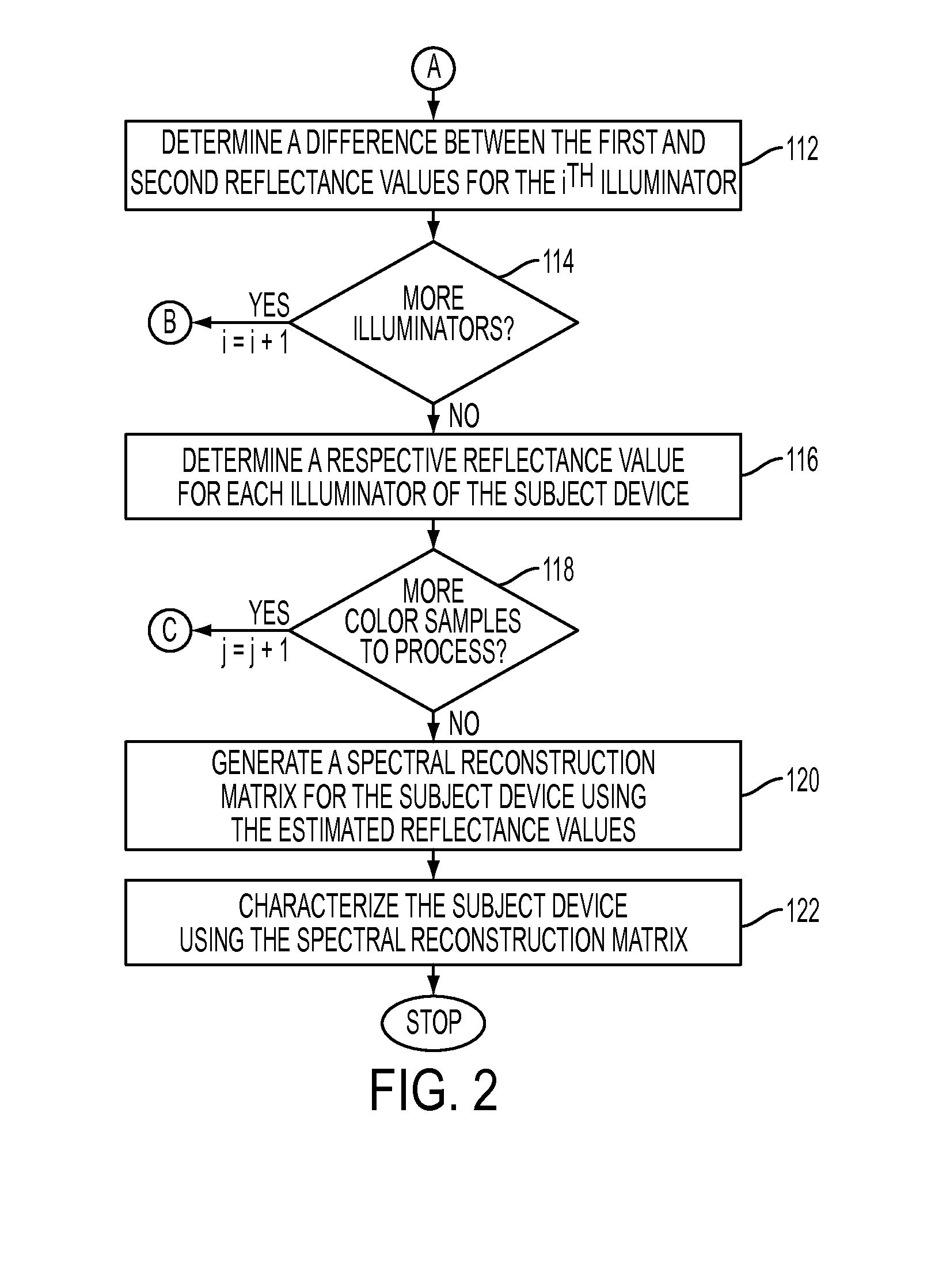Characterization of a model-based spectral reflectance sensing device
a sensing device and spectral reflectance technology, applied in the field of characterization of model-based spectral reflectance sensing devices, can solve the problems of time-consuming and laborious characterization, dramatic differences in the measurements taken by the two sensing devices, and contribute to the overall cost of manufacturing the sensing instruments, etc., to achieve acceptably accurate characterization of the model-based sensing system, fast characterization, and good accuracy
- Summary
- Abstract
- Description
- Claims
- Application Information
AI Technical Summary
Benefits of technology
Problems solved by technology
Method used
Image
Examples
Embodiment Construction
[0030]What is disclosed is novel system and method for quickly characterizing a reflectance sensing device without measuring the full set of characterization color patch training samples currently used in manufacturing and characterizing individual sensors. In accordance with the teachings hereof, measurements of training samples taken with a ‘fleet master’ reflectance sensing device are adapted based upon knowledge of the wavelengths of the illuminators used for both the subject and master sensors as well as the spectral reflectance response of the training samples as measured by the reference device. A reconstruction matrix can then be constructed for the subject sensor utilizing estimated reflectance values.
[0031]It should be understood that one of ordinary skill in this art would be readily familiar with many techniques and algorithms commonly found in the color science and document reproduction arts, particularly with respect to reflectance measurement, spectrophotometric devic...
PUM
 Login to View More
Login to View More Abstract
Description
Claims
Application Information
 Login to View More
Login to View More - R&D
- Intellectual Property
- Life Sciences
- Materials
- Tech Scout
- Unparalleled Data Quality
- Higher Quality Content
- 60% Fewer Hallucinations
Browse by: Latest US Patents, China's latest patents, Technical Efficacy Thesaurus, Application Domain, Technology Topic, Popular Technical Reports.
© 2025 PatSnap. All rights reserved.Legal|Privacy policy|Modern Slavery Act Transparency Statement|Sitemap|About US| Contact US: help@patsnap.com



